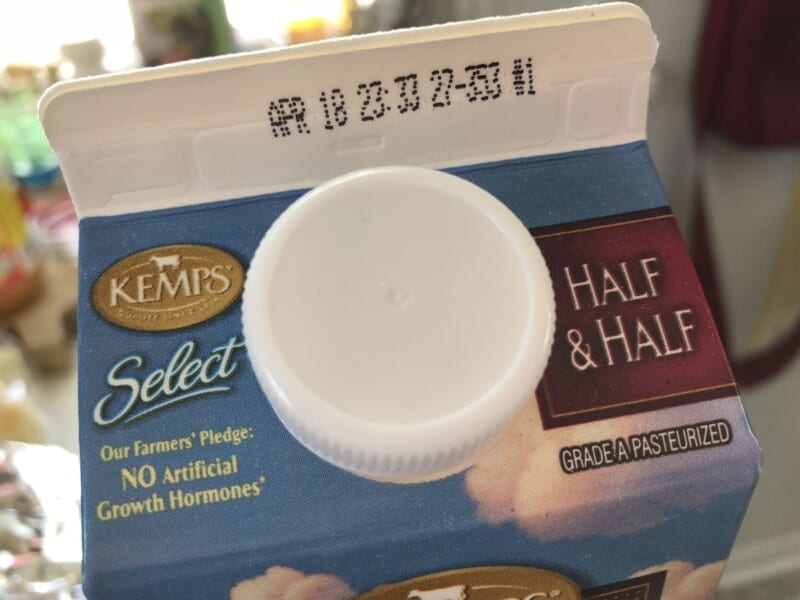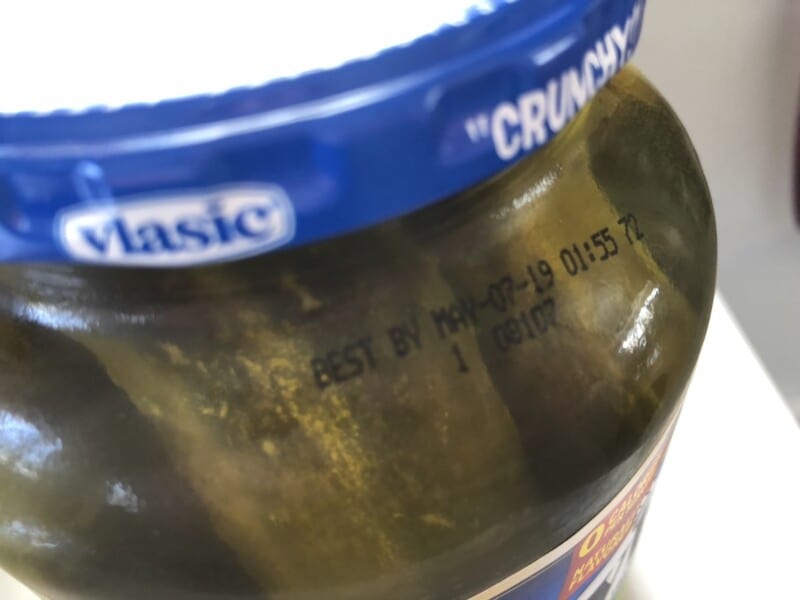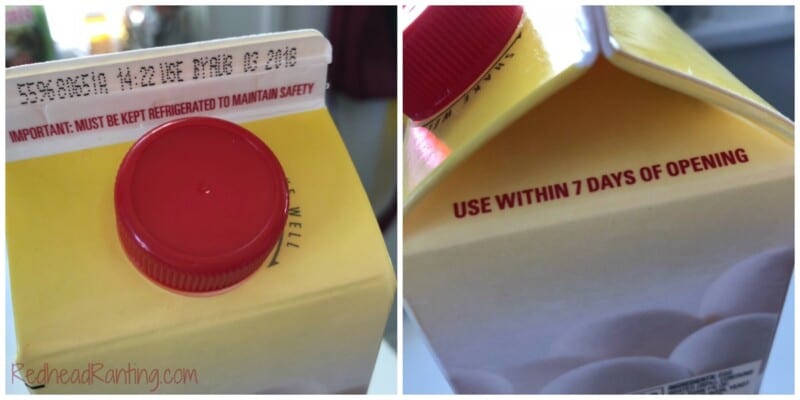Around these parts we play fast and loose with “use by” dates and expiration dates. I’ve got a roast in the freezer from 2003. It was my fathers and when he died in 2006 there didn’t seem to be any reason to throw it away, I just haven’t had an opportunity to cook it yet. It’s wrapped well and I suspect when I do get around to it, it will be fine. That said, do use by dates mean anything? What’s the difference between a ‘use by’ date, ‘sell by’ date and ‘best by’ date?
According to recent studies, Americans waste up to 25% of the food and beverages they buy each year. The average family is throwing away between $1365 and $2275 each year!
I try not to waste food, but when I see products like sour cream, yogurt or salad dressings with expiration dates that were last month, or from the holidays, I toss the container out. I give it a good sniff test and often it smells and even tastes fine, but the date haunts me. I don’t want to poison my kid so I toss the food out.
Just about everything in the refrigerator has a date stamped on it, but just what does the date mean? And, interestingly, products like deli meat will often not have a clear date for consumption. My dog ends up eating more cold cuts than I would like because of the confusion. Hey, she can always go out and eat grass, right?
She’s fine, really.
Do Use By Dates Mean Anything?
Use By Date
The “use by” date found on foods like sour cream, egg whites and other dairy products is for consumers. It is when the product should be eaten. If the food has been stored properly, at the optimal temperature, you can probably go a week or two beyond the date. You’re supposed to get a week of use after the date on a carton of milk, but that has never been my experience. Many times, the milk is nasty before the use by date. I suspect it could have something to do with where I purchased it (displayed in an open refrigerator opposed to a closed one) or that I store it in the door of my fridge. It could also mean that the temp in my fridge is off. All of these are possibilities. Milk rarely lasts even close to the use by date so it’s rarely a concern and milk is easy enough to tell if it’s expired.

Sell By Date
The “sell by” date is for the retailers. It’s when they need to rotate it off their shelves. According to my research the product still has a third of its life shelf-left.
Best By Date
Similar to the “use by” date, but this is more about quality than safety. You’ll find “best by” dates on salad dressings, pasta sauces and other items that don’t need refrigeration until after they’ve been opened. I’ve got a bottle of Hershey’s Chocolate Syrup in my fridge that expired last year and we’re still using it. I can’t tell if the quality has gone down, it’s all sugar.

Use Within x Days
I see this on things like alfredo sauce, egg beaters and other sauces that have dairy in them. Often it’s hard to find the message, it’s not usually by the “use by” or “best by” date. Also on packages of meat. I have no trouble going a day or two beyond the date.
How the food is preserved is also important. Foods like tomato sauce or pickles have a long shelf life because of the acidity and the sugar that’s in them. A jar of pickles can last up to two years opened in the fridge. Same goes for sauerkraut. Salt, vinegar and sugar are all great for processing and preserving food because they deter the growth of bacteria so well.
Of course, if something is beyond the date stamped on it but it looks ok go ahead and give it a sniff or taste. I made some homemade yogurt two months ago and found one that had been pushed back in the fridge. The lid on it, a standard two piece canning lid, was slightly bulging. When I opened it it popped off, like a can of soda or something. It smelled fine but when I tasted it it was clear it had turned. I threw it out though I am pretty sure I could have cleaned something with it.
I hope this helps you prevent further food waste.










Leave A Comment